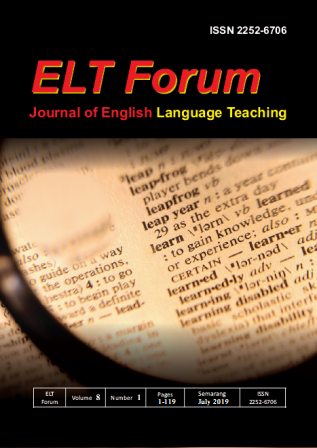Textual Meaning of English Textbook Instruction
A Case of Buku Bahasa Inggris Kelas X by Indonesian Ministry of Education and Culture
Abstract
This study is about analysis of textual meanings in English textbook instructions. The main purpose of this study is to analyse the textual meanings found in the textbook instructions to support the learning objectives. Textual meaning is indicated by Theme and Rheme within the clauses. Halliday and Matthiessen (2014) said that theme is coded by three elements, they are topical, textual and interpersonal. The student textbook entitled Bahasa Inggris Kelas X 2017 Revision published by The Indonesian Ministry of Education and Culture was chosen as the object of the study because it is the most widely used textbook in state shools in Indonesia. Meanwhile, the data were the instruction clauses in Chapters 1-7 (the first semester) of the textbook.
The findings show that the English textbook instructions in Chapters 1-7 contains Unmarked Topical Theme (76%), Textual Theme (17%), Marked Topical Theme (5%), and Interpersonal Theme (2%). Unmarked Topical Theme is the most dominant type of Theme found in the clauses which is realized by verb. It is in line with the dominant mood type of the instruction, that is imperative which thematized verb in the clauses (Halliday and Mattheissein, 2014). It can be inferred that the instructions are clear and concise which meant that the instructions were good enough to support the learning objectives (Flake, 2017). Thus, it is concluded that instructions in Chapters 1-7 have good choices of Theme which meets the characteristics of good instructions to support the learning objectives



_.jpg)
_.jpg)




